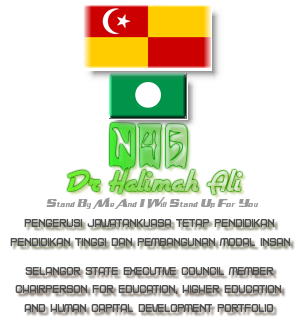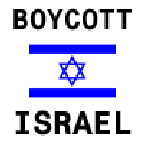 FBI dan SEC telah mendapati En Madoff melalui firmanya Bernard L. Madoff Investment Securitites menjalankan skim Ponzi bersaiz mega , sejenis penipuan di mana pelabur di peringkat awal dibayar dengan wang yang diperolehi dari pelaburan orang masuk kemudian sehingga tiada lagi dana yang mampu dikumpul dan akhirnya gulung tikar. Skim ini boleh juga dipanggil sebuah piramid yang runtuh apabila tidak dapat menampung pembayaran "dividen" mereka yang menjadi ahli di hujung-hujung.
FBI dan SEC telah mendapati En Madoff melalui firmanya Bernard L. Madoff Investment Securitites menjalankan skim Ponzi bersaiz mega , sejenis penipuan di mana pelabur di peringkat awal dibayar dengan wang yang diperolehi dari pelaburan orang masuk kemudian sehingga tiada lagi dana yang mampu dikumpul dan akhirnya gulung tikar. Skim ini boleh juga dipanggil sebuah piramid yang runtuh apabila tidak dapat menampung pembayaran "dividen" mereka yang menjadi ahli di hujung-hujung.
En Madoff bukan menjalankan "dana hedge" di mana portfolio terletak pada bank dan firma broker seperti Goldman Sachs dan JPMorgan. Menurut satu afidavit yang dibuat oleh En Madoff melalui agen FBI, fraud kali ini berjumlah USD$50 billion, sekaligus menjadikannya kes penipuan kewangan yang terbesar. Madoff telah diikat jamin sebanyak USD$10 juta.
Di negara kita wujud dari masa ke semasa skim labu peram, Pak Man Telo, Saham Internet, dan pelbagai lagi jenis "perniagaan" menggunakan konsep OPM (other people's money)- guna duit orang lain untuk memulakan perniagaan atau nak menjadi kaya.
Penerangan tentang Skim Ponzi di SINI
The Federal Bureau of Investigation and S.E.C. said that Mr. Madoff’s firm, Bernard L. Madoff Investment Securities, ran a giant Ponzi scheme, a type of fraud in which earlier investors are paid off with money raised from later victims — until no money can be raised and the scheme collapses. Mr. Madoff was not running an actual hedge fund, but instead managing accounts for investors inside his own securities firm. The difference, though seemingly minor, is crucial. Hedge funds typically hold their portfolios at banks and brokerage firms like JPMorgan Chase and Goldman Sachs.
According to an affidavit sworn out by federal agents, Mr. Madoff himself said the fraud had totaled approximately $50 billion, a figure that would dwarf any previous financial fraud. He is to be released tonight on $10 million bond.
Now Accused of Fraud, Wall St. Wizard Had His Skeptics
By ALEX BERENSON and DIANA B. HENRIQUES
December 12, 2008
THE NEW YORK TIMES
For years, investors, rivals and regulators all wondered how Bernard L. Madoff worked his magic.
But on Friday, less than 24 hours after this prominent Wall Street figure was arrested on charges connected with what authorities portrayed as the biggest Ponzi scheme in financial history, hard questions began to be raised about whether Mr. Madoff acted alone and why his suspected con game was not uncovered sooner.
As investors from Palm Beach to New York to London counted their losses on Friday in what Mr. Madoff himself described as a $50 billion fraud, federal authorities took control of what remained of his firm and began to pore over its books.
But some investors said they had questioned Mr. Madoff’s supposed investment prowess years ago, pointing to his unnaturally steady returns, his vague investment strategy and the obscure accounting firm that audited his books.
Despite these and other red flags, hedge fund companies kept promoting Mr. Madoff’s funds to other funds and individuals. More recently, banks like Nomura, the Japanese firm, began soliciting investors for Mr. Madoff internationally. The Securities and Exchange Commission, which investigated Mr. Madoff in 1992 but cleared him of wrongdoing, appears to have been completely surprised by the charges of fraud.
Now thousands, possibly tens of thousands, of investors confront losses that range from serious to devastating. Some families said on Friday that they believed they had lost all their savings. A charity in Massachusetts said it had lost essentially its entire endowment and would have to close.
According to an affidavit sworn out by federal agents, Mr. Madoff himself said the fraud had totaled approximately $50 billion, a figure that would dwarf any previous financial fraud.
At first, the figure seemed impossibly large. But as the reports of losses mounted on Friday, the $50 billion figure looked increasingly plausible. One hedge fund advisory firm alone, Fairfield Greenwich Group, said on Friday that its clients had invested $7.5 billion with Mr. Madoff.
The collapse of Mr. Madoff’s firm is yet another blow in a devastating year for Wall Street and investors. While Mr. Madoff’s firm was not a hedge fund, the scope of the fraud is likely to increase pressure on hedge funds to accept greater regulation and transparency and protect their investors.
On Thursday, the Federal Bureau of Investigation and S.E.C. said that Mr. Madoff’s firm, Bernard L. Madoff Investment Securities, ran a giant Ponzi scheme, a type of fraud in which earlier investors are paid off with money raised from later victims — until no money can be raised and the scheme collapses.
Most Ponzi schemes collapse relatively quickly, but there is fragmentary evidence that Mr. Madoff’s scheme may have lasted for years or even decades. A Boston whistle-blower has claimed that he tried to alert the S.E.C. to the scheme as early as 1999, and the weekly newspaper Barron’s raised questions about Mr. Madoff’s returns and strategy in 2001, although it did not accuse him of wrongdoing.
Investors may have been duped because Mr. Madoff sent detailed brokerage statements to investors whose money he managed, sometimes reporting hundreds of individual stock trades per month. Investors who asked for their money back could have it returned within days. And while typical Ponzi schemes promise very high returns, Mr. Madoff’s promised returns were relatively realistic — about 10 percent a year — though they were unrealistically steady.
Mr. Madoff was not running an actual hedge fund, but instead managing accounts for investors inside his own securities firm. The difference, though seemingly minor, is crucial. Hedge funds typically hold their portfolios at banks and brokerage firms like JPMorgan Chase and Goldman Sachs. Outside auditors can check with those banks and brokerage firms to make sure the funds exist.
But because he had his own securities firm, Mr. Madoff kept custody over his clients’ accounts and processed all their stock trades himself. His only check appears to have been Friehling & Horowitz, a tiny auditing firm based in New City, N.Y. Wealthy individuals and other money managers entrusted billions of dollars to funds that in turn invested in his firm, based on his reputation and reported returns.
Victims of the scam included gray-haired grandmothers in Florida, investment companies in London, and charities and universities across the United States. The Wilpon family, the main owners of the New York Mets, and Yeshiva University both confirmed that they had invested with Mr. Madoff, and a Jewish charity in Massachusetts said it would lay off its five employees and close after losing nearly all of its $7 million endowment. Other investors included prominent Jewish families in New York and Florida.
On Friday afternoon, investors and lawyers for investors with Mr. Madoff packed Judge Louis L. Stanton’s courtroom at federal court in Manhattan, hoping to question lawyers for Mr. Madoff and the S.E.C. But a deputy for Judge Stanton canceled the hearing, leaving investors with few answers. Several investors said they were planning to file lawsuits against the firm in the hope of recovering some money.
Based on the vagueness of the complaints against Mr. Madoff, his confession, as detailed in court filings, seems to have taken the F.B.I. and S.E.C. by surprise. Investigators have not explained when they believe the fraud began, how much money was ultimately lost and whether Mr. Madoff lost investors’ money in the markets, spent it, or both. It is not even clear whether Mr. Madoff actually made any of the trades he reported to investors.
The F.B.I. and S.E.C. have also not said whether they believe Mr. Madoff acted alone. According to the authorities, Mr. Madoff told F.B.I. agents that the scheme was his alone. He worked closely with his brother, sons and other family members, many of whom have retained lawyers.
Also likely to face very difficult questions are the hedge funds, investment advisers and banks that raised money for Mr. Madoff. At least some big investment advisers steered clients away from putting money with Mr. Madoff, believing the returns could not be real.
Robert Rosenkranz, principal of Acorn Partners, which helps wealthy clients choose money managers, said the steadiness of the returns that Mr. Madoff reported did not make sense, and the size of his auditor raised further concerns.
“Our due diligence, which got into both account statements of his customers, and the audited statements of Madoff Securities, which he filed with the S.E.C., made it seem highly likely that the account statements themselves were just pieces of paper that were generated in connection with some sort of fraudulent activity,” Mr. Rosenkranz said.
Simon Fludgate, head of operational due diligence for Aksia, another advisory firm that told clients not to invest with Mr. Madoff, said the secrecy of his strategy also raised red flags. And Mr. Madoff’s stock holdings, which he disclosed each quarter with the Securities and Exchange Commission, appeared to be too small to support the size of the fund he claimed. Mr. Madoff’s promoters sometimes tried to explain the discrepancy by explaining that he sold all his shares at the end of each quarter and put his holdings in cash.
“There were no smoking guns, but too many things that didn’t add up,” Mr. Fludgate said.
However, the S.E.C. had already investigated Mr. Madoff and two accountants who raised money for him in 1992, believing they might have found a Ponzi scheme. “We went into this thing just thinking it might be a huge catastrophe,” an S.E.C. official told The Wall Street Journal in December 1992.
Instead, Mr. Madoff turned out to have delivered the returns that the investment advisers had promised their clients. It is not clear whether the results of the 1992 inquiry discouraged the S.E.C. from examining Mr. Madoff again, even when new red flags surfaced. Lawyers at the S.E.C. did not return calls.
Meanwhile, Fairfield Greenwich Group, whose clients have $7.5 billion invested with the Madoff firm, said it was “shocked and appalled by this news.”
“We had no indication that we and many other firms and private investors were the victims of such a highly sophisticated, massive fraudulent scheme.”
At the court hearing, an individual investor, who declined to give his name to avoid embarrassment, expressed a similar sentiment.
“Nobody knows where their money is and whether it is protected,” the investor said.
“The returns were just amazing and we trusted this guy for decades — if you wanted to take money out, you always got your check in a few days. That’s why we were all so stunned.”
Zachery Kouwe and Stephanie Strom contributed reporting.
































Latest Updates 16/12/08 Visit
http://www.reuters.com/article/topNews/idUSLF62253520081216?feedType=RSS&feedName=topNews&pageNumber=3&virtualBrandChannel=10272
Madoff's Sons deny involvement.